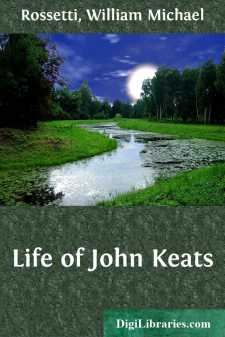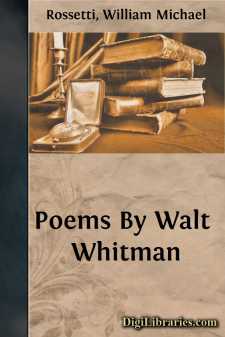Categories
- Antiques & Collectibles 13
- Architecture 36
- Art 48
- Bibles 22
- Biography & Autobiography 813
- Body, Mind & Spirit 142
- Business & Economics 28
- Children's Books 17
- Children's Fiction 14
- Computers 4
- Cooking 94
- Crafts & Hobbies 4
- Drama 346
- Education 46
- Family & Relationships 57
- Fiction 11829
- Games 19
- Gardening 17
- Health & Fitness 34
- History 1377
- House & Home 1
- Humor 147
- Juvenile Fiction 1873
- Juvenile Nonfiction 202
- Language Arts & Disciplines 88
- Law 16
- Literary Collections 686
- Literary Criticism 179
- Mathematics 13
- Medical 41
- Music 40
- Nature 179
- Non-Classifiable 1768
- Performing Arts 7
- Periodicals 1453
- Philosophy 64
- Photography 2
- Poetry 896
- Political Science 203
- Psychology 42
- Reference 154
- Religion 513
- Science 126
- Self-Help 84
- Social Science 81
- Sports & Recreation 34
- Study Aids 3
- Technology & Engineering 59
- Transportation 23
- Travel 463
- True Crime 29
Life of John Keats
Description:
Excerpt
CHAPTER I.
A truism must do duty as my first sentence. There are long lives, and there are eventful lives: there are also short lives, and uneventful ones. Keats’s life was both short and uneventful. To the differing classes of lives different modes of treatment may properly be applied by the biographer. In the case of a writer whose life was both long and eventful, I might feel disposed to carry the whole narrative forward pari passu, and to exhibit in one panorama the outward and the inward career, the incidents and the product, the doings and environment, and the writings, acting and re-acting upon one another. In the instance of Keats this does not appear to me to be the most fitting method. It may be more appropriate to apportion his Life into two sections: and to treat firstly of his general course from the cradle to the grave, and secondly of his performances in literature. The two things will necessarily overlap to some extent, but I shall keep them apart so far as may be convenient. When we have seen what he did and what he wrote, we shall be prepared to enter upon some analysis of his character and personality. This will form my third section; and in a fourth I shall endeavour to estimate the quality and value of his writings, in particular and in general. Thus I address myself in the first instance to a narrative of the outer facts of his life.
John Keats came of undistinguished parentage. No biographer carries his pedigree further than his maternal grandfather, or alleges that there was any trace, however faint or remote, of ancestral eminence. The maternal grandfather was a Mr. Jennings, who kept a large livery-stable, called the Swan and Hoop, in the Pavement, Moorfields, London, opposite the entrance to Finsbury Circus. The principal stableman or assistant in the business was named Thomas Keats, of Devonshire or Cornish parentage. He was a well-conducted, sensible, good-looking little man, and won the favour of Jennings’s daughter, named Frances or Fanny: they married, and this rather considerable rise in his fortunes left Keats unassuming and manly as before. He appears to have been a natural gentleman. Jennings was a prosperous tradesman, and might have died rich (his death took place in 1805) but for easy-going good-nature tending to the gullible. Mrs. Keats seems to have been in character less uniform and single-minded than her husband. She is described as passionately fond of amusement, prodigal, dotingly attached to her children, more especially John, much beloved by them in return, sensible, and at the same time saturnine in demeanour: a personable tall woman with a large oval face. Her pleasure-seeking tendency probably led her into some imprudences, for her first baby, John, was a seven months’ child.
John Keats was born at the Moorfields place of business on the 31st of October 1795. This date of birth is established by the register of baptisms at St. Botolph’s, Bishopsgate: the date usually assigned, the 29th of October, appears to be inaccurate, though Keats himself, and others of the family, believed in it. There were three other children of the marriage—or four if we reckon a a son who died in infancy: George, Thomas, and lastly Fanny, born in March 1803. An anecdote is told of John when in the fifth year of his age, purporting to show forth the depth of his childish affection for his mother. It is said that she then lay seriously ill; and John stood sentinel at her chamber-door, holding an old sword which he had picked up about the premises, and he remained there for hours to prevent her being disturbed. One may fear, however, that this anecdote has taken an ideal colouring through the lens of a partial biographer. The painter Benjamin Robert Haydon—who, as we shall see in the sequel, was extremely well acquainted with John Keats, and who heard the story from his brother Thomas—records it thus: “He was, when an infant, a most violent and ungovernable child. At five years of age or thereabouts he once got hold of a naked sword, and, shutting the door, swore nobody should go out. His mother wanted to do so; but he threatened her so furiously she began to cry, and was obliged to wait till somebody, through the window, saw her position, and came to her rescue.” It can scarcely be supposed that there were two different occasions when the quinquennial John Keats superintended his mother and her belongings with a naked sword—once in ardent and self-oblivious affection, and once in petulant and froward excitement.
The parents would have liked to send John to Harrow school: but, this being finally deemed too expensive, he was placed in the Rev....



